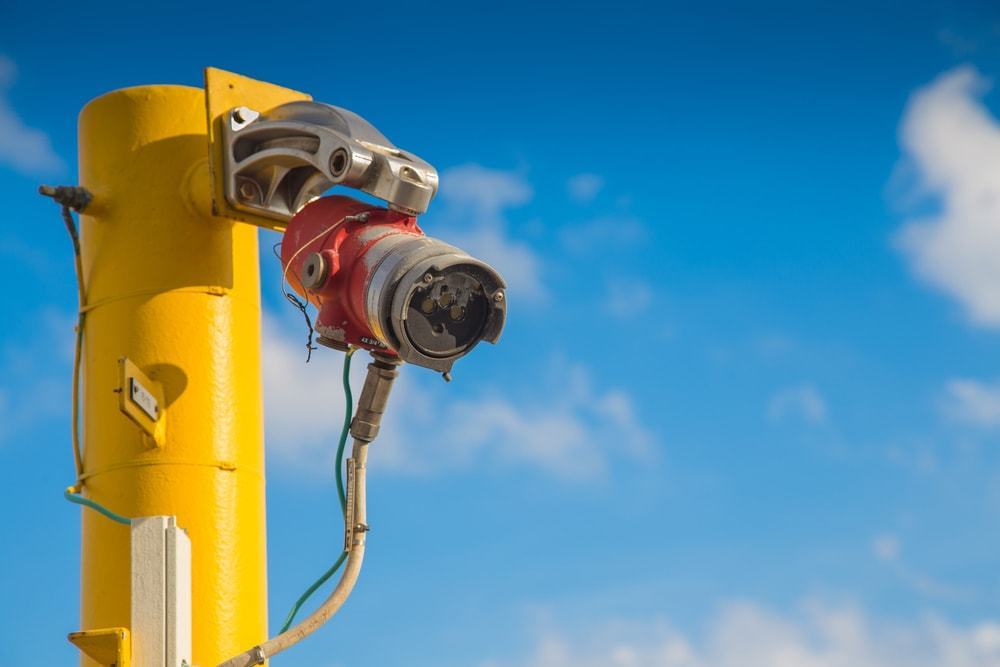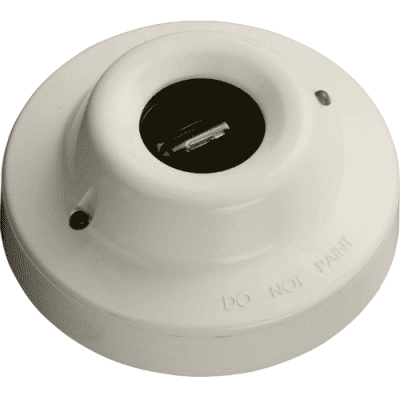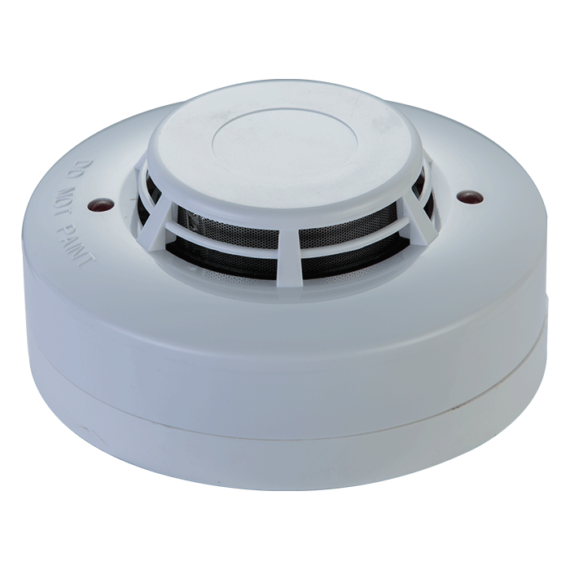Type of Detector
Smoke detectors (general)
Merits
Slow burning fires, smoldering fires, for most of the areas where principal tire hazard is not from the presence of flammable liquids. Fires involving wood, paper, textile, etc, in earlier stages
Demerits
Not sensitive for clean burning fires which does not produce smoke particles; areas in which the principal fire hazard is the presence of tlammable liquids or gases that produce little smoke during a fire
Ionization smoke detector
Merits
General purpose smoke detector-better for smoke containing small particles, such as rapidly burning fast flaming fires
Demerits
Less sensitive to the larger particles found’in optically dense smoke of similar mass, such as can result from smoldering fires including those involving polyurethane foam, or overheated PVC. Areas subject to smoke, steam, dust or dirt during normal use. Usage of these detectors are on way to phase out due to radiation problems
Optical smoke detector
Merits
General purpose smoke detector -better for smoldering fires
Demerits
Areas subject to smoke, steam, dust or dirt during normal use
Light scattering type (smoke detector)
Merits
Sensitive to light coloured smoke
Demerits
Less sensitive to very dark smoke which absorbs light rather than scattering it
Light obscuration type (smoke) detector
Merits
Sensitive to very dark smoke which absorbs light rather than scattering it
Demerits
Areas subject to smoke, steam, dust or dirt during normal use
Photo-thermal multi-criteria detector
Merits
General purpose detector - good for smoldering and fast flaming fires, optically dense smoke
Demerits
Areas subject to smoke, steam, dust or dirt during normal use, less sensitive to small particles found in clean burning fires that produce little visible smoke
Optical beam smoke detector
Merits
Large and high rooms, open plan spaces with relatively high ceilings (for example warehouses), fires not involving production of smoke (with built in thermal turbulence detection). Suited for applications where anticipated fire would produce black smoke. Sensitive to cumulative obscuration presented by a smoke field
Demerits
Areas subject to smoke, steam, dust or dirt during normal use. Less sensitive to colour of smoke. Cannot detect clean colourless smoke
Aspirating (air-sampling) type smoke detector
Merits
They are suitable for use where usage of other types of smoke detectors present difficulties, such as aesthetics, height and temperature of the enclosure. Sampling points can be located almost anywhere unlike detectors which cannot be installed on walls, storage racks, machinery space, floor voids, etc. Each sampling point is a detector itself. Suitable for cold storage. Higher sensitivity levels, ease of installation and most suitable for protection of high value and critical equipment
Demerits
Air-sampling detectors are not suitable if the air movement due to HVAC requirements is outside the range specified by the manufacturers 20
Heat detectors (general)
Merits
Clean burning fires, such as those involving certain flammable liquids. Areas subject to smoke, steam, dust or dirt during normal use, fires that evolve heat and flame rapidly, suitable for rooms where heat producing equipment like kitchen, pantry, boilers, DC sets, etc, are installed/used
Demerits
Unlikely to respond to smoldering and slow burning fires, unsuitable for high value areas where a small fire can cause major damage. Areas in which presence of smoke can pose a potential threat to the occupants
Rate-of-rise heat detector
Merits
Areas subject to smoke, steam, dust or dirt during normal use
Demerits
Areas subject to rapid changes of temperature or temperatures over 43 DC
Fixed temperature heat detector
Merits
Areas subject to smoke, steam, dust or dirt and rapid changes of temperature during normal use
Multi-sensor fire detector
Merits
Combines the characters of two types of detectors, each of which responds to different physical and/or chemical characteristics of fire. The purpose of combining sensors in this way is to enhance the performance of the system in detection of fire or its resistance to at least certain categories of false alarms or both. There is significant potential for reduction of many types of false alarm. It is also possible to disable an individual sensor depending on the circumstances at the place of installation
Flame detectors (general)
 |
| OUT DOOR |
 |
| INDOOR |
Merits
High ceiling, open spaced buildings like warehouses/aircraft hangers, outdoor/semi-outdoor areas, areas where rapidly developing flames occur like petrochemical/refinery/gas installations/paint shops, etc
Demerits
Not sensitive to smoldering/slow burning fires and hence cannot be called general purpose detectors. Not suitable for the type of fires where, flaming can occur only after substantial release of smoke
Infra-red flame detector
Merits
Same as above, these detectors penetrate through smoke well. High speed, moderate sensitivity. Suitable for indoor/outdoor applications
Demerits
Affected by temperature range in the vicinity, subject to false alarms caused by blackbody radiation like heaters, incandescent lamps, halogen lamps, flickering sunlight, etc and hence usage 21in such areas to be avoided. Sensitive to IR radiation from sources like any hot surface, ovens, furnaces, lamps, etc. also and due care shall be taken while installation
Ultraviolet flame detector
Merits
Highest speed, highest sensitivity. Suitable for indoor applications
Demerits
Not sensitive for high ceiling, etc, as the radiation from fire is attenuated by smoke. Random UV radiation from sources, such as lightning, arc welding, etc, can cause false alarms and hence usage in such areas to be avoided. Blinded by thick smoke and oil vapours on optics
IRfIR flame detector
Merits
High speed, moderate sensitivity, low false alarm rate, most suitable for chemical and hydrocarbon flames in particular as signal received is processed at two sensors. Suitable for indoor/outdoor applications
Demerits
Somewhat affected by temperature range in the vicinity, suffer from atmospheric attenuations, especially on long range detection applications
UVfIR detector
Merits
Highest speed, highest sensitivity and low false alarm rate
Demerits
Blinded by thick smoke and oil vapours on optics. Suitable for indoor/outdoor applications
IRfIR/IR (IR3) detector
Merits
Highest speed, highest sensitivity, lowest false alarm rate. Most suitable for chemical and hydrocarbon flames in particular as signal received is processed at three sensors
Demerits
No significant disadvantages. Suitable for indoor/outdoor applications
Spark detector
Merits
Spark detectors are suitable for detection of sparks some types of duct or conveyor, monitoring the fuel, etc, as it passes by. Usually, it is necessary to enclose the portion of the conveyor where the detectors are located, as these devices generally require a dark environment
Demerits
Extraneous sources of radiant emissions that have been identified as interfering with the stability of spark detectors include: (a) ambient light (b) electromagnetic interference (EMI, RFI), and (c) electrostatic discharge in the fuel stream
Ember detector
Merits
Same as above except that ember detectors can also detect fires in lit environment like coal conveyors, etc
Demerits
Detector window clarity shall always be ensured
Linear heat sensing cables
Merits
Cables tunnels, trays and vaults, material conveyors, bulk storage multi-racked areas, rim seals of floating roof tanks storing hazardous chemicals, and a few other special occupancies
Demerits
Not suitable at all applications other than what is specified












Comments
Post a Comment